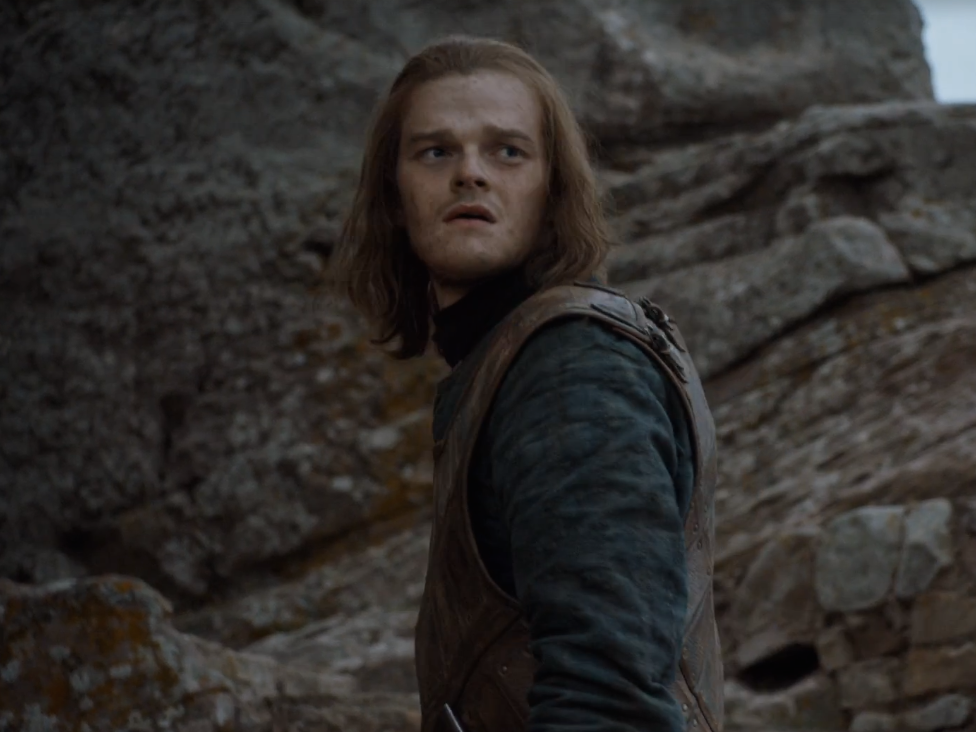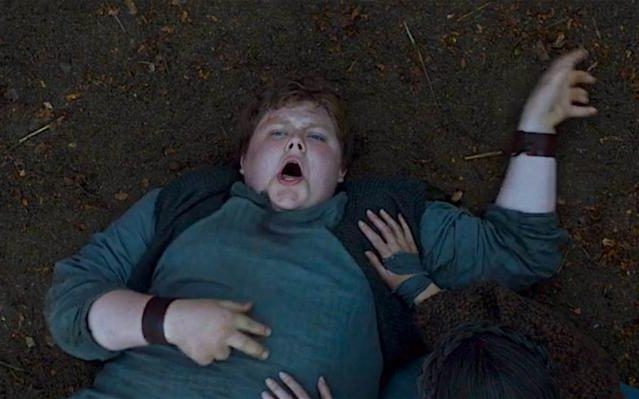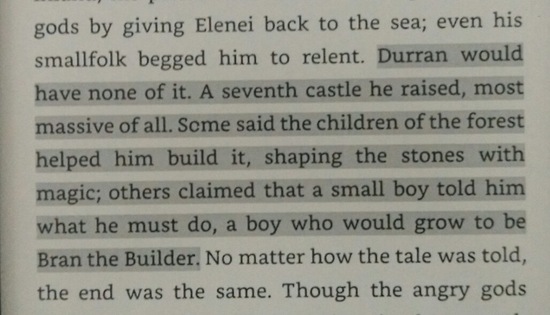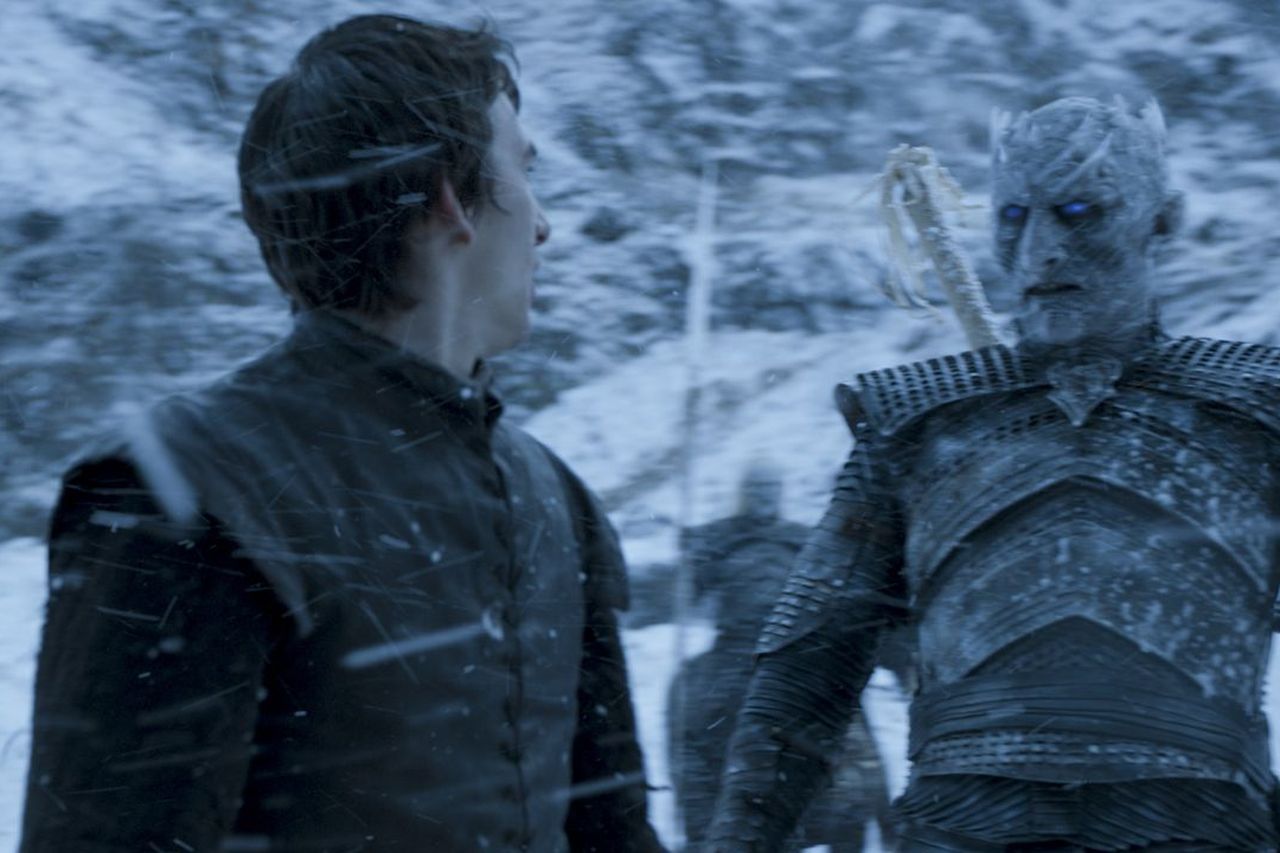In “Game of Thrones,” could Bran’s time travel explain the Mad King’s voices and more?
Quick Answer: The climactic Game of Thrones episode “The Door” dropped the bombshell that Bran Stark’s dual powers of warging and greensight allow him to influence the past. Fans are now looking for clues from earlier episodes to decipher how profoundly Bran may have shaped the events we’ve witnessed thus far in the Game of Thrones narrative. While Bran can’t change events whose outcomes are already fact (like his father’s death), he may have played a role in determining known episodes of history. One big fan theory suggests that the voices in the Mad King’s head, and the madness reflected in his repeated phrase “Burn them all,” could be linked to Bran. Even Jon Snow’s suspected secret parentage could be revealed to us through Bran’s powers. On a grander scale, some speculate that all the Brandon Starks in the history of House Stark are incarnations of the same person. With “The Door,” Bran Stark may suddenly have become the most powerful character in the entire Game of Thrones story.
In its recent much talked-about and cried-over episode “The Door” (Season 6, Episode 5), Game of Thrones (2011-) delivered some monumental game-changers. First, we saw the demise of Hodor (Kristian Nairn) at the hands of White Walkers. The beloved and gentle character’s death is a grave occasion in itself, but it also happened during a mind-bending series of events that set fire to our whole understanding of the Game of Thrones world and birthed explosive fan theories that, true or not, are grounded in solid clues. We will have to wait to see what will be confirmed, but the implications of Hodor’s death may have shifted the events of the story in a mighty way.
Over the past few seasons, we learned of Bran Stark’s (Isaac Hempstead-Wright) warg powers, which allow him to enter the minds of animals, and even humans, to take control. Wargs typically only control animals, making Bran’s ability to warg humans something special. But now we’ve also seen that Bran possesses a second great gift. When he reaches the cave of the Three-Eyed Raven (Max von Sydow), the centuries-old man grown into a tree who can observe the past, the Raven also unleashes the power of greensight in Bran. Greensight allows the viewer to witness past, present and contemporary but distant events in a dream state. Still, the Raven insists Bran can only view other points in time, not manipulate them. However, in Bran’s greensight vision at the Tower of Joy (in Season 6, Episode 3, “The Oathbreaker), where he watches a younger version of his father duel with legendary swordsman Arthur Dayne, we receive a hint that Bran’s presence in the vision can be felt: Bran calls out for his father, and his father turns to stare at the empty landscape, as if he hears the voice. The Raven tells Bran that his father merely heard the wind, dismissing the notion Bran’s presence was felt, but it’s possible that the Raven has reasons for not yet wanting Bran to realize the extent of his gift.

A young Ned Stark thinks he hears something in the wind
In “The Door,” the White Walkers attack the cave, and Bran wargs into Hodor to hold them back, while still in a greensight of the past. The young Hodor in Bran’s greensight has a seizure, and Meera’s shouting “hold the door” pushes through to the past, scrambling Hodor’s mind, causing the shortened version of “hold the door” to be the only thing he can say for the remainder of his life.

Young Wylis becoming Hodor
If we accept that Bran essentially “made” Hodor into Hodor, Bran’s combined warging and greensight skills do have the ability to influence the past. That is so huge for the story that Bran might have just become the most important character on the show. The conceivable ways in which he could have influenced the narrative to this point are endless.
Contrary to what the Raven tells Bran, the events of “The Door” indicate that Bran can not only witness other points in time but also shape them. Still, from what we know so far, his influence on the past only contributes to and explains the present we already see. Bran’s interference with the past doesn’t change the results we already know, but it’s responsible (in part) for how things have already turned out. At least, that’s what most fans conclude based on the evidence we’ve been given.
The most interesting question now arises: which of the plots we’ve seen could show signs of Bran’s impact?
The Mad King’s Madness
The biggest idea that fans have seized on involves none other than Aerys Targaryen, the Mad King. From what we understand, Bran can’t go back in time and change what’s fact in the present day, so if he went via greensight to the moment of his father’s execution, he couldn’t stop it because his father is dead in the present. On the other hand, if he went back farther in time to the era of the Mad King and tried to warg the Mad King’s mind or convince him to stop committing the acts he did, Bran could be responsible for the voices the Mad King heard. Those voices led to the king’s insanity, which caused Robert’s Rebellion, which set off the chain of events that led up to the narrative we’ve seen in Game of Thrones.
A user on the Game of Thrones subreddit contributed the following theory: “We’ve now seen Bran’s ability to influence the past (or, confirm it, depending on how time travel paradoxes are solved in GOT). We’ve seen the link between the past and present BREAK Hodor’s mind, turning him into a simpleton. I don’t think madness is a far stretch from this. If you remember Jaime’s testimony, the mad king just kept repeating ‘burn them all.’ What if he didn’t mean King’s Landing and the rebels? What if Bran somehow either accidentally or purposefully lets him see the army of the dead? Someone could be yelling something akin to ‘burn them all’ just like tonight’s ‘hold the door.’” The linguistic similarity between the Mad King’s “Burn them all” and Hodor’s “Hold the door” strongly suggests a link between the two episodes.
In a Season Six trailer, we saw a quick scene that looked like Jaime Lannister (Nikolaj Coster-Waldau) stabbing Aerys Targaryen in the back. This teaser suggests we will be exploring the past through flashbacks, more than likely witnessing this major event in Thrones history through Bran’s eyes. Now we know that Bran’s presence at that moment could include Bran’s influence.
Of course, if Bran did use whispering to communicate with the Mad King, the possibility arises that Bran is to some degree at fault for setting off the entire game of thrones as we know it. It’s unlikely that Bran would have intended to cause all these instances of war and bloodshed, but if Bran was behind the Mad King’s madness and its ensuing consequences, the results of his interference may not all be for the best.
Jon Snow’s Birth
Game of Thrones super-fans already know that the Tower of Joy flashback in “Oathbreaker” holds far more significance that what we’ve seen so far. The vision revealed that Ned Stark’s often-told story of his victory in the swordfight against Arthur Dayne was a lie. Disarmed, young Ned Stark was only saved at the last second when his ally, Howland Reed, stabbed Dayne in the back. The Raven pulls Bran out of the vision before we can learn anything beyond this character revelation, but fans know that the Tower of Joy is also the site of Lyanna Stark’s death.
A brief backstory: Ned’s sister Lyanna was betrothed to Robert Baratheon when Aerys Targaryen’s son, Rhaegar, fell in love with her and took her away to the Tower of Joy (whether Lyanna went willingly or was abducted is contested). Robert responded with war, and Rhaegar is said to have died in battle, but the cause of Lyanna’s death at the Tower is unknown. Given the circumstances, fans have inferred that she died in childbirth. The most popular fan theory holds that Lyanna gave birth to Rhaegar’s son, and the baby was none other than Jon Snow. (R + L = J, as the theory is known.) The Tower of Joy flashback’s revelation that Ned lied about the battle also lends credence to the fans’ belief that Ned lied about something much bigger — namely, telling the whole world including his wife, Catelyn, that his sister’s baby was his own bastard son in order to protect the Targaryen heir from certain slaughter by the Baratheons and Lannisters.
Could Ned’s seeming ability to sense Bran’s presence at the Tower of Joy mean that here, too, Bran may play a retroactive role? Or will his greensight simply serve as a means of revealing, to Jon and to us, the truth about Jon’s parentage? The extent of Bran’s potential influence here remains to be seen, but it’s clear that the narrative intends to use Bran as the eyes through which we witness this history.
It is also during “Oathbreaker” that the Raven tells Bran, “The past is already written. The ink is dry.” The Raven goes even further, warning, “Stay too long where you don’t belong and you will never return.” These forbidding words suggest that the Tower of Joy’s events may represent great temptation for Bran to interfere or to become lost in the past.
Bran Stark: A Man of All Ages
Some theories speculate we’ve been getting hints of Bran’s influence all along, ever since Ned Stark (Sean Bean) seemed to be seeing something that doesn’t exist just before his death in Season One.
On a grander scale, others have speculated there are so many Brandon Starks in the history of House Stark because they have all been incarnations of the same person. This message board user theorized Bran the Builder, the man who lived 8,000 years ago and is responsible for building The Wall and founding House Stark, was (along with all interim Brandons) embodied by our current, time-observing Bran Stark.
A passage from the first novel by George R. R. Martin, A Game of Thrones, could be interpreted as a hint towards this theory:
“I could tell you the story about Brandon the Builder,” Old Nan said. “That was always your favorite.”
Thousands and thousands of years ago, Brandon the Builder had raised Winterfell, and some said the Wall. Bran knew the story, but it had never been his favorite. Maybe one of the other Brandons had liked that story. Sometimes Nan would talk to him as if he were her Brandon, the baby she had nursed all those years ago, and sometimes she confused him with his uncle Brandon, who was killed by the Mad King before Bran was even born. She had lived so long, Mother had told him once, that all the Brandon Starks had become one person in her head.”
That could be coincidental speculation, but Martin is craftier than that. He could have been hinting at Bran’s centuries-old influence from the very beginning, implying all the Bran Starks in history are, to some degree, the same guy.

A Game of Thrones
The aforementioned message board post also posited, “The Last Hero is probably just a guy he’ll warg into from the future, and he’ll use him to beat the Others the first time around and make peace with the Children of the Forest because he will know that he needs the religion of the Old Gods to be maintained in the north so that men can learn to Warg—otherwise he can’t, in the future, go back to the past and set things in motion. Bloodraven tells him that he has to become him, because Bloodraven knows that in his earlier days, the future Bran is the one who controlled him and taught him the ways and sent him to the Children of the Forest to hold the place until he, Bran, could come to him so that he could learn it.”

Bran sees a White Walker
The Last Hero isn’t mentioned much on the show, but he is the man who found the Children of the Forest when the White Walkers first showed up, years ago. His men perished, but he found the Children and defeated the White Walkers, sending them to exile, and formed the Night’s Watch. That theory suggests that Bran has influenced everything since the beginning and that he even taught the Three-Eyed Raven to do what he did, so that someday the Raven could teach young Bran. That’s wild.
Now that the Game of Thrones narrative is exploring more flashbacks, some of the most powerful moments to come may not be surprise blows from the future but revelations about the past. The concrete “what” of future happenings may interest us less than the “how” and “why” of what we already know has come to pass. This turn in the storytelling is a significant testament to the layered universe of characters, families and backstories that Game of Thrones has brought to life, creating mysteries of interconnection and engaging viewers on more simultaneous levels than any purely forward-moving plot.
Even if these particular theories and speculations are wrong, it’s clear that something game-changing is going to come out of Bran’s ability to witness and influence the past. No detail in Game of Thrones exists without reason, and this one has some of the grandest implications. It will also be interesting to see how the story plays out in the books, as Martin recently said while Hodor’s name still means “hold the door” in the novels, the reveal will come through a completely different context, which could modify its significance to the story. If that’s the case, the series and the novels could be heading towards to very different endings for the Game of Thrones story.
Read More on Game of Thrones:
Why is the Hodor reveal so huge for the Game of Thrones story?
How much will George R.R. Martin’s next book, The Winds of Winter, mirror Season 6?
Which book characters absent from the show does George R.R. Martin miss most?
Daenerys Targaryen: Why do so many fans like her?
Are there any truly kind characters on Game of Thrones?
Why did the writers change Sansa Stark’s storyline in Season 5?
What real-life castles and locations are used on Game of Thrones?
What is the true history behind Cersei’s Walk of Shame?

